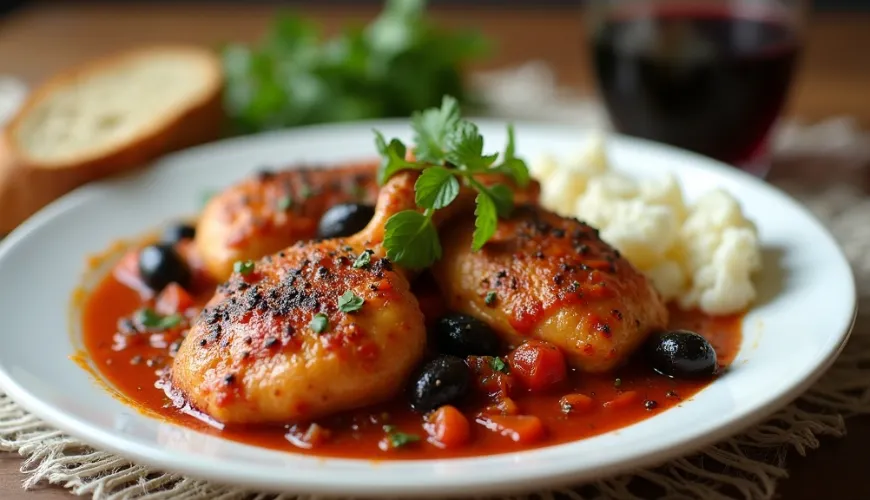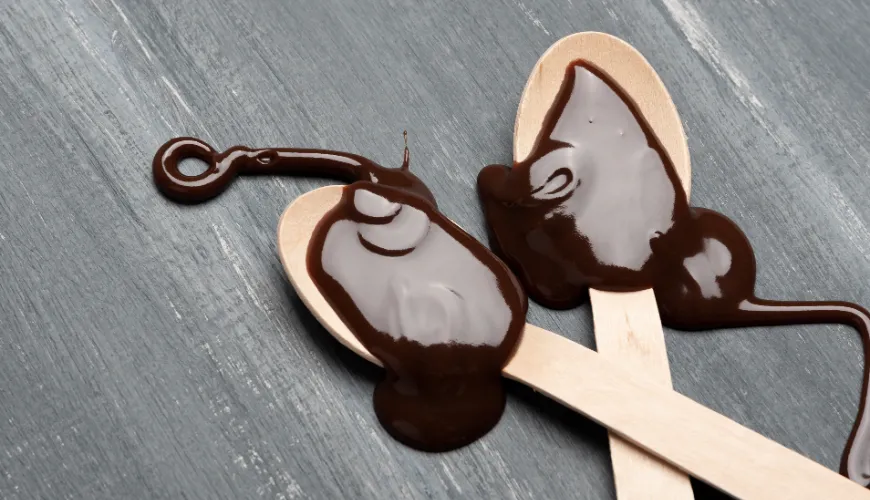
Cook Italian Chicken Cacciatore and Impress Your Loved Ones

Italian Chicken Cacciatore - Rustic Charm That Smells Like Home
In the kitchen, there are few recipes that combine simplicity, heartiness, and a rich history quite like chicken cacciatore. This traditional Italian dish, whose name literally means "hunter's style chicken," is a celebration of rustic culinary art—a meal made from available ingredients yet tastes like it's from a Michelin-starred restaurant. What makes Italian chicken cacciatore so special, and why does it still deserve a place at the table today?
When you say cacciatore, many imagine a hearty, fragrant sauce where tomatoes, garlic, herbs, sometimes even olives or capers, and pieces of chicken are stewed until the meat falls apart on the tongue. But behind this delicious combination of flavors lies a story that reaches deep into Italian history, and at the same time, a recipe that fits perfectly into a modern, more ecologically minded kitchen.
Cacciatore - The Poor Man's Dish That Conquered the World
Although today you can find various versions worldwide, the true hunter's style chicken originates from Italy, specifically from the regions of Tuscany and Umbria. The term "alla cacciatora" (in the style of the hunter) refers to dishes prepared by hunters—simply, with what they had on hand. Although it was originally more about game or rabbit meat, the recipe gradually adapted to more accessible ingredients, such as chicken, which now dominates the recipe.
As with other traditional dishes, there is a vast number of variations. Some cooks add white wine, others red—some add rosemary, others oregano. In some regions, mushrooms or peppers are used. This diversity demonstrates how cacciatore chicken can embrace different flavors while retaining its essence: a nourishing and honest meal that warms the heart.
And how is it actually prepared? The base is slowly stewing the meat along with onion, garlic, tomatoes, and herbs. The long cooking process blends all the flavors together to create a complex yet gentle sauce, ideal for serving with pasta, polenta, or just fresh bread.
The Chicken Cacciatore Phenomenon - When Rustic Cuisine Enters the Mainstream
In recent years, chicken cacciatore has gained popularity even among Czech cooking enthusiasts. For instance, the popular magazine Apetit included the recipe for Italian chicken cacciatore among its proven favorites. Readers appreciate the simplicity of the procedure and the strong, homely taste of the dish. And it's no wonder—the recipe combines the best of Italian cuisine: quality ingredients, minimal processing, and an emphasis on natural flavor.
An example is the story of Olga from Olomouc, who found the recipe in a cookbook from Apetit and prepared it for a family celebration. "I never would have believed something so simple could make such an impression. Everyone asked for seconds," she laughs. She adds a tip—add a few green olives and fresh thyme to the sauce. Simplicity truly holds power.
What makes Italian chicken cacciatore so attractive that it has become a hit not only in rural households but also in urban kitchens? Perhaps it's a return to roots, nostalgia for meals that smell like home. Or its versatility—chicken cacciatore can be prepared both for a dinner for two and as a main course for a festive lunch.
A Sustainable Recipe for Today
Apart from taste, more and more people today seek meals that are sustainable—and cacciatore chicken has something to offer in this regard. Being a one-pot meal, it is energy-efficient. Moreover, it allows for the use of less attractive parts of the chicken, like thighs or wings, which are often more affordable and tastier than breasts.
Eco-conscious cooks can also opt for organic chicken from ethical farming, homegrown tomatoes, or preservative-free preserves. Even the broth often added to the recipe can be easily prepared at home from bones and vegetable scraps. Minimizing waste and using local ingredients thus makes chicken cacciatore not only a tasty but also a considerate meal.
What's more—the recipe is very flexible. If the end of the week is approaching and only the last vegetable leftovers remain in the fridge, you can confidently add them to the sauce. Carrots, celery, leeks, zucchini—it all blends into a harmonious whole. This makes the recipe a smart way to reduce food waste.
How to Prepare Chicken Cacciatore at Home
Although you'll find many variations, the following indicative list shows the basic ingredients you'll need:
- chicken thighs or quarters (ideally with bone and skin)
- olive oil
- onion, garlic
- tomatoes (fresh or canned), or tomato puree
- white or red wine
- black olives, capers (optional)
- herbs: rosemary, thyme, bay leaf
- salt, pepper
The meat is first browned in oil until golden, removed, and onions and garlic are sautéed in the drippings. Add tomatoes, wine, and herbs—and finally, the chicken is returned to the pan. It is all stewed under a lid until the meat is tender. Any side dish will do—polenta, pasta, potatoes, or sourdough bread. In an hour, you'll have a meal on the table that tastes as if it came from the hands of an Italian nonna.
Why Chicken Cacciatore Should Find a Place in Your Kitchen
In an age where cooking often succumbs to fashion trends and complex techniques, chicken cacciatore remains true to its essence—it is a dish cooked from the heart. You don't need any special equipment or exotic ingredients. Just patience, quality ingredients, and a little time. The result is a dish that delights family and friends, that smells like home, and invites you to sit at the table and slow down for a while.
Rustic recipes often hide a depth that modern dishes lack. As the famous chef Massimo Bottura said: "The real wealth of the kitchen is not in luxury, but in the memory that food evokes." Chicken cacciatore is just that—simple, yet full of emotions.
Whether you prepare it according to the traditional recipe from Apetit or find your own variation based on what you have at home, know that you have just discovered a meal that will accompany you for a lifetime. Because some flavors simply never go out of style.

